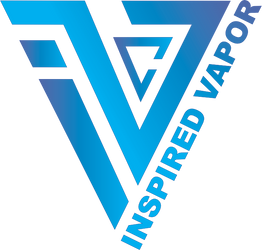WHAT IS EXCISE TAX?
Earlier this year, the Government of Canada introduced amendments to the Excise Act, 2001 to implement a new excise duty framework on vaping products. The excise duty applies to vaping substances that are manufactured in Canada or imported and that are intended for use in a vaping device in Canada.
WHEN WILL THE EXCISE TAX BE IMPLEMENTED?
Effective October 1, 2022, manufacturers and importers of vaping products sold in our stores are required to be licensed or registered with the Canada Revenue Agency (CRA). They must pay excise duty on all the vaping products manufactured or imported in Canada starting Oct 1, 2022, and must affix a vaping excise stamp to indicate that duty was paid.
HOW WILL THE TRANSITION TAKE PLACE AND HOW IT WILL AFFECT OUR BUSINESS?
Starting January 1, 2023, no one is permitted to possess or sell unstamped packaged vaping products. After this date, we can only sell vaping products that have a vaping excise stamp affixed to the product. There is a transitional period between October 1st, 2022 and December 31st, 2022 to support the new regime, where we will still be able to sell the unstamped products.
We plan to continue the sale of our current unstamped products until the Mid of November 2022 or until stocks last (Unstamped inventory manufactured before Oct 1st, 2022), then a transition to the new Stamped products will begin to ensure 100% compliance by December 31, 2022.
HOW WILL EXCISE TAX BE CALCULATED AND IMPACT THE PRICING?
A vaping product licensee who packages vaping products manufactured in Canada on or after October 1, 2022, must pay the applicable vaping duty. The Excise tax will flow through the value chain and the MSRP will increase accordingly.
The excise duty rates on vaping products are outlined in Schedule 8 of the Excise Act, 2001 and are as follows:
For vaping liquids:
- $1 per 2 millilitres (mL), or fraction thereof, for the first 10 mL of vaping substance in the vaping device or immediate container
- $1 per 10 mL, or fraction thereof, for amounts over the first 10 mL
Here is an example of how it would work:
1) A package containing 4 pods, with each pod containing 1.5 mL of vaping liquid, attracts $4 of vaping duty ($1 per 1.5 mL pod). It is important to note that the vaping duty is calculated on the quantity of vaping liquid contained in each individual pod, not on the total volume contained in the package.
2) A 30 mL bottle of vaping liquid attracts $7 of vaping duty ($5 for the first 10 mL plus $2 for the next 20 mL).
3) A 60 mL bottle of vaping liquid attracts $10 of vaping duty ($5 for the first 10 mL plus $5 for the next 50 mL).
FREQUENTLY ASKED QUESTIONS
1) Which products will be affected by the new excise-stamp regulation?
All products that classify as vaping products will be impacted
a. A vaping substance that is not contained within a vaping device
b. A vaping device that contains a vaping substance
For example: disposable vapes, e-liquid bottles, closed pods or any bottles. Any vaping hardware or mods (including tanks, chargers, accessories, empty cartridges) and battery or device will not be taxed.
2) How will the pricing of the products be impacted?
The total MSRP will increase with the inclusion of the excise duty.
The new price will be calculated via the following formula:
Product price + excise tax + any applicable taxes
4) Till when can we sell the unstamped products?
As of January 1, 2023, no person is permitted to possess or sell unstamped packaged vaping products unless explicitly permitted under the Act and you may be subject to enforcement action.
As a company that prides itself in terms of compliance and regulation, we highly encourage all staff to prepare for this transition period as penalties may lead up to having our business license revoked and high penalty fees. This is a serious matter and the CRA will be involved.
For more information please visit:
